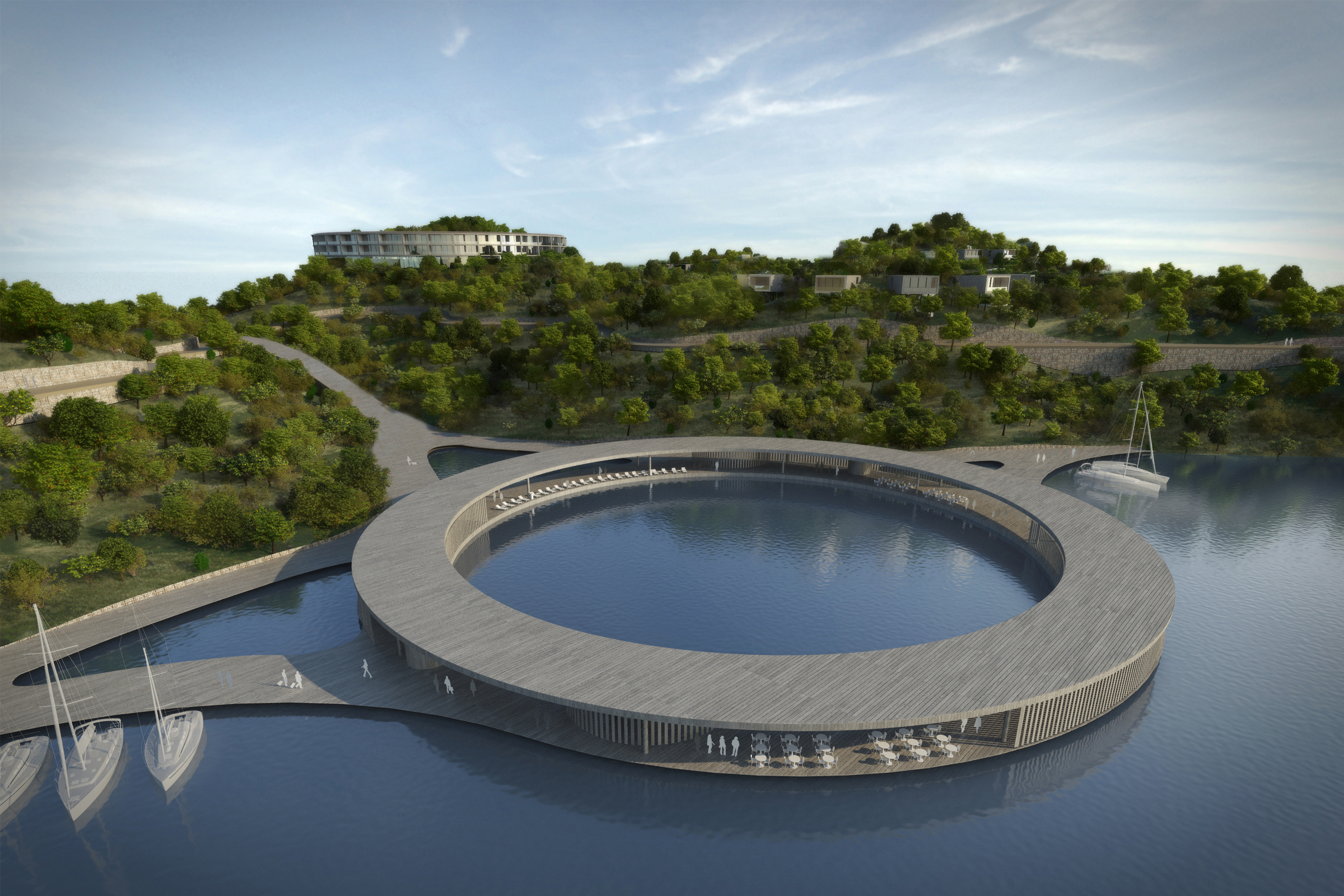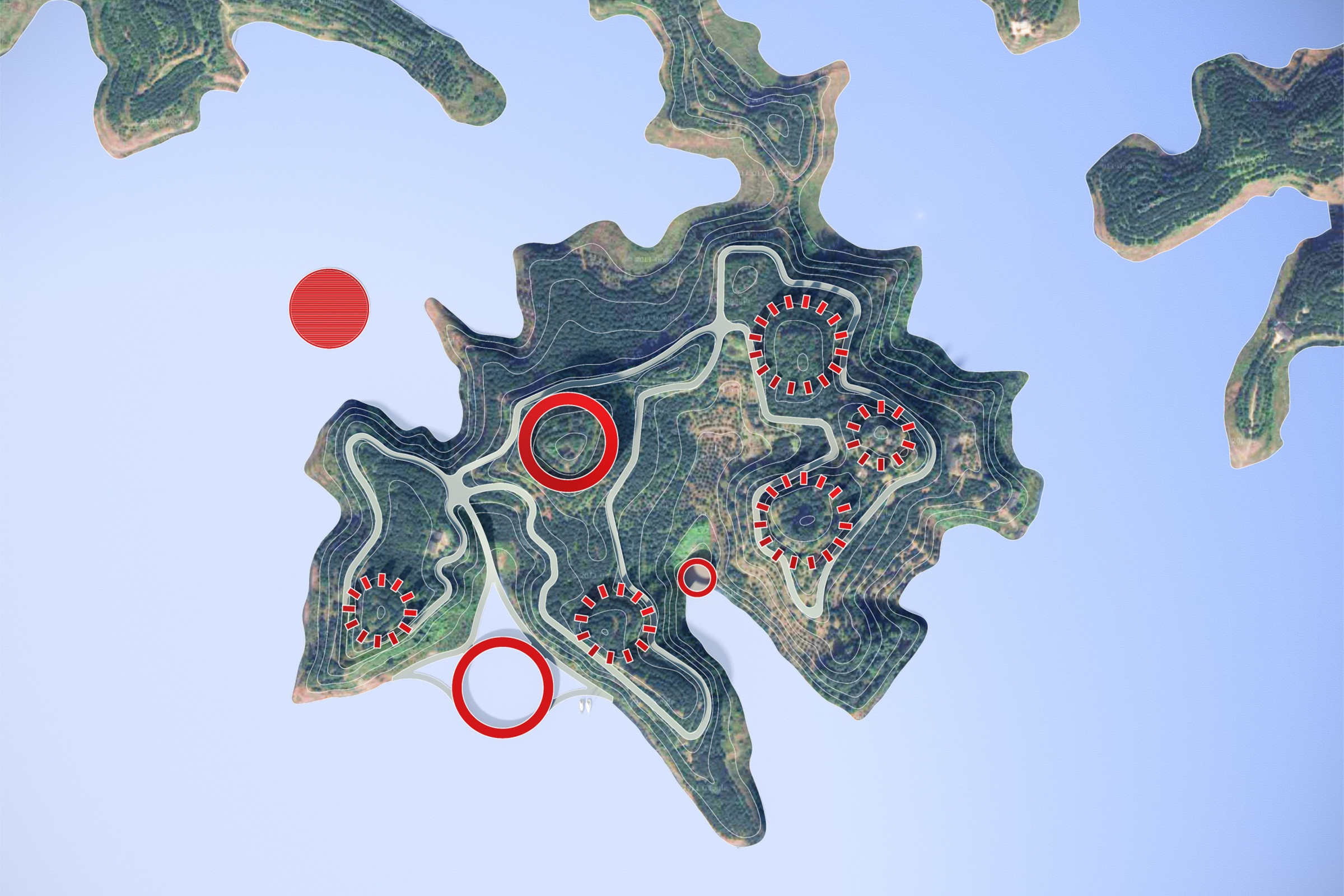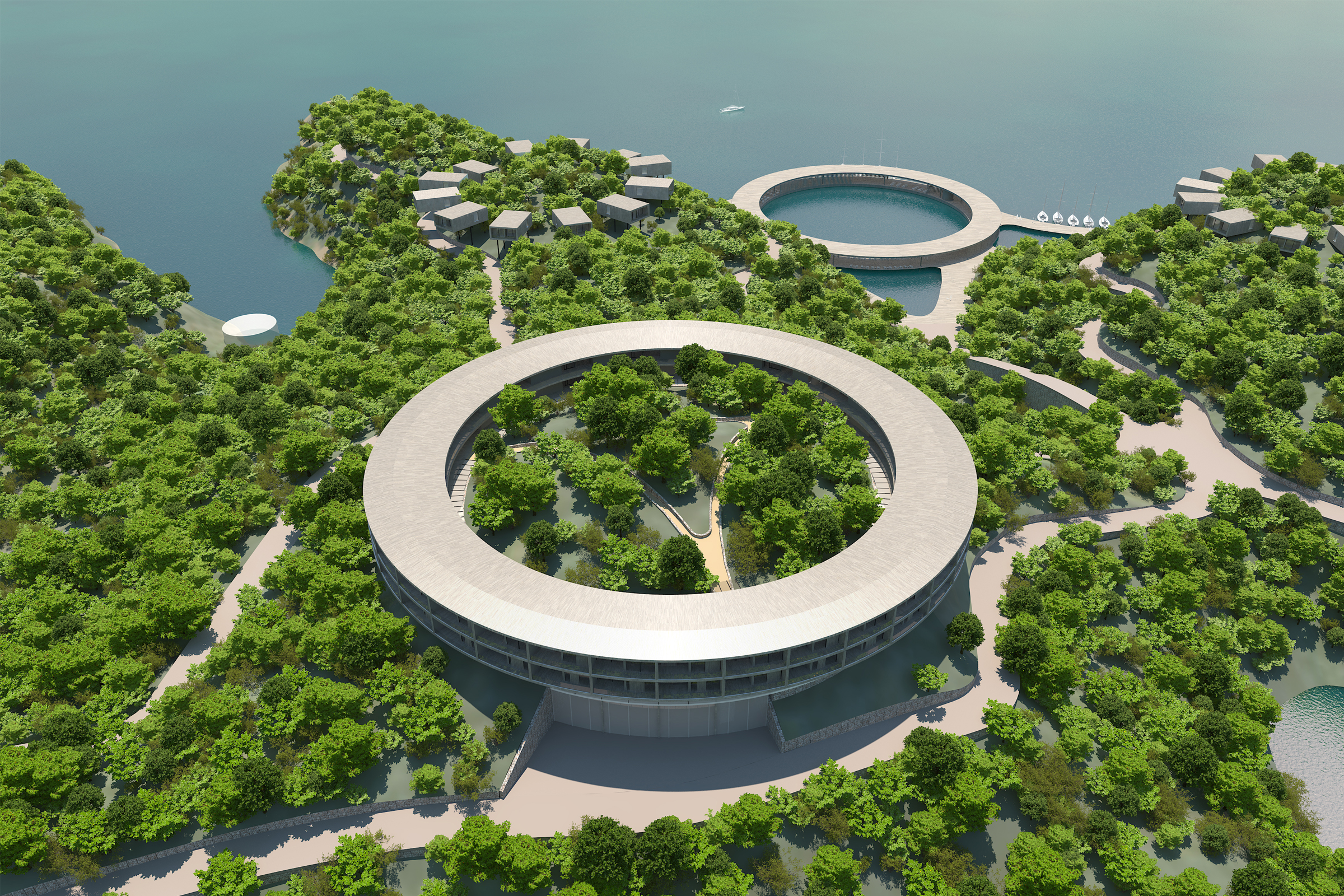Chongqing, China

The project “The Pearl” is located on a string of islands in the Red Basin in southwestern China – a landscape of lakes through which the Yangtze River flows. The river extends to more than 600 km passing the famous Three Gorges in Chongqing.
Due to the favorable climate in this region, the islands have developed into a rich, fertile garden landscape characterized by orange groves.
There, using both a modern interpretation of the genius loci and traditional Chinese construction techniques, a five-star resort is to be built and carefully integrated into the landscape. This is to be done with the symbolic emphasis on life and health in harmony with nature and using wood as the main material in all buildings in order to minimize the impact on the island and the lagoon.
In order to access the island and the resort, a marina with shops, cafés and other recreational facilities is planned, leading the visitors via a stairway to the resort. The stairway is cut into the red sandstone joining a circumferential path, from which single buildings or groups of buildings on top of five of the hills on the island can be easily reached.
The other hills will be surrounded by a total of fifty villas, supplemented by sports, gardening and health facilities, while at the highest point of the island a hotel with a panoramic restaurant and fifty rooms is planned.
The most exclusive spot, however, is to be located in one of the bays: a pavilion standing in the water, built with its front facing the lake and its back facing the mountain – designed to render the spirits of the air and of the water.
The guests of the pavilion may visit the restaurant, use the sport facilities, or simply enjoy the sky, the lake and the earth, which is, according to traditional concepts, the path to human happiness and success.
Following the idea of the harmony with nature, the resort is operated exclusively with the renewable energies obtained from solar collectors on the lake. In order to reduce the air-conditioning load, the roofs of the buildings have broad eves which provide shade and prevent the rooms from heating up. Large sliding windows can be opened to ensure natural ventilation for all areas.





© GKK Architektur und Staedtebau GmbH 2023
© GKK+Architekten 2022